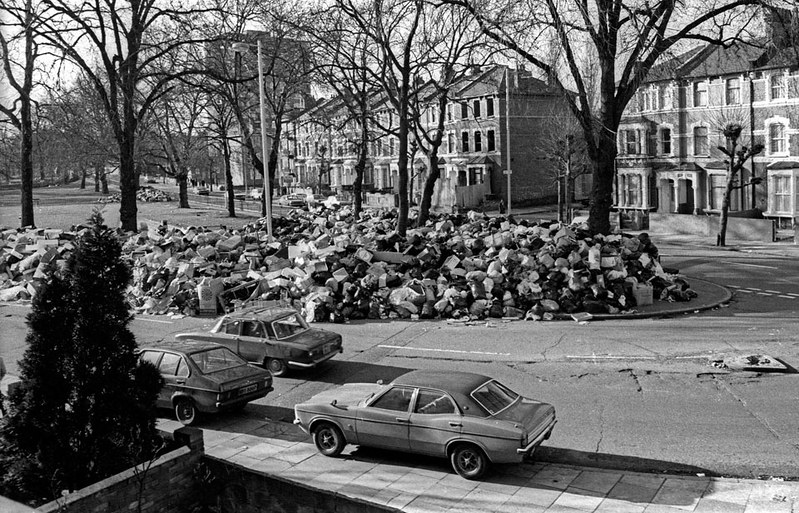There has recently been many shallow comparisons made between this winter’s industrial action and with the Winter of Discontent. The Winter of Discontent occupies a particular place in the British public consciousness, albeit as a distorted memory heavily influenced by political mythmaking. The comparison is ultimately facile and often feels politically motivated. Why does the current action need to be the second of Winter of Discontent? The result of imposing previous historical events onto the current strife misses the key differences between the two episodes of industrial conflict.
While many reports rightly note that the scale of the current action is smaller (often with an unhealthy fixation on ‘days lost’ statistics) there is little explanation for this beyond the fact that union membership, and the proportion of workers covered by collective bargaining agreements, is smaller now. Seldom remarked upon is the absence of a vibrant shop-floor culture of organisation, by 1979 this was partly fostered by workers being subjected to high inflation for most of the decade. This culture now hardly exists on account of changing workplace geography, a strict anti-union legislative framework that makes spontaneous shop-floor action all but impossible, and, yes, a shrunken union movement. Britain was much more industrially democratic then than it is now.
The consequence of this is that the current action is more regulated and planned. While there are plenty of local disputes happening at the moment, the eye-catching disputes are the set-piece national ones, particularly in the public sector. 1979 was not about large-scale volcanic disputes. It was a case of thousands of small fires burning at once with many starting from relatively short-term stimulus. Conversely, many of the current large national disputes have been in the pipeline for a while. For instance, the UCU’s pension dispute dates to 2018 and the bitter dispute at Royal Mail has been building for over two years, with the CWU holding a successful strike ballot in March 2020. That much of the industrial action pertaining to each dispute is now overlapping is not a coincidence, aggressively deteriorating conditions of employment and cost of living will do this to people, but it is important to recognise the longer-term factors that have brought these disputes to this point.
These larger scale industrial disputes taking longer to transform into industrial action is another difference between now and the Winter of Discontent. In 1978-9 much of the action was driven by local members and union executives struggled to keep up with it, now the disputes (in terms of balloting) must be organised with a top-down approach, the outcome being that organised labour is more regimented but less agile. This lack of agility could well cost organised labour if the government discovers something resembling competency and finds more inventive ways to undermine it than it currently has. This also means that, if negotiated settlements can be reached, then the action can be more reliably halted; in 1979 the only real option was to wait for the disputes to burn themselves out.
It is also now virtually impossible for industrial action to spread organically, as the legal framework acts as a straitjacket. Prior to the introduction of various pieces of anti-union legislation in the 1980s, secondary picketing and secondary action were legal. While there will be some coordination between unions in this period of strikes, workers cannot provide the practical solidarity of secondary action meaning the dispute will not spread to separate employers. Thus, for all the talk of a strike wave, these disputes will remain self-contained.
So far action has been used comparatively sparingly by unions in large-scale disputes. Whereas indefinite strike action was fairly commonplace in the myriad of local disputes in the Winter of Discontent, now it is a rarity. While there are some exceptions to this at a local level, for instance the waste dispute in Coventry earlier this year, trade unions are hesitant to call indefinite strike action (and it will be interesting to see if this proposed new legislation limiting the number of times a union can strike under one mandate changes this). The consequence of this is that action now, while still potentially disruptive, is episodic.
Essentially, the current unrest shares almost no similarities with the Winter of Discontent. It is historically significant in its own right, not just as a second-rate tribute act. Its current significance is that this is the first time that significant unrest has occurred under the restrictive framework of the 2016 trade union act. Depending on what outcome these disputes engender they may acquire additional significance (just as the Winter of Discontent is now significant for, in popular memory at least, bringing down the Labour government). However, currently this industrial action is significant because of the experiences it fosters in participants and bystanders and the disputes that it contributes to, for good or ill. What happens in the future remains to be analysed, but it would help if simplistic comparison was substituted for genuine analysis.


